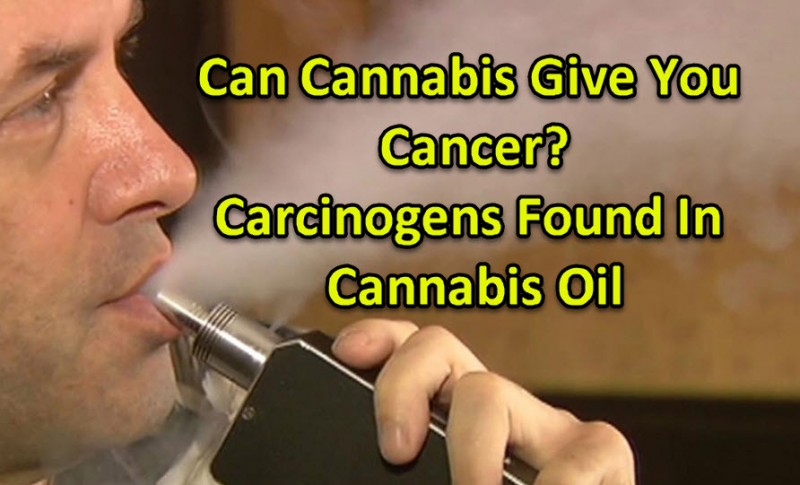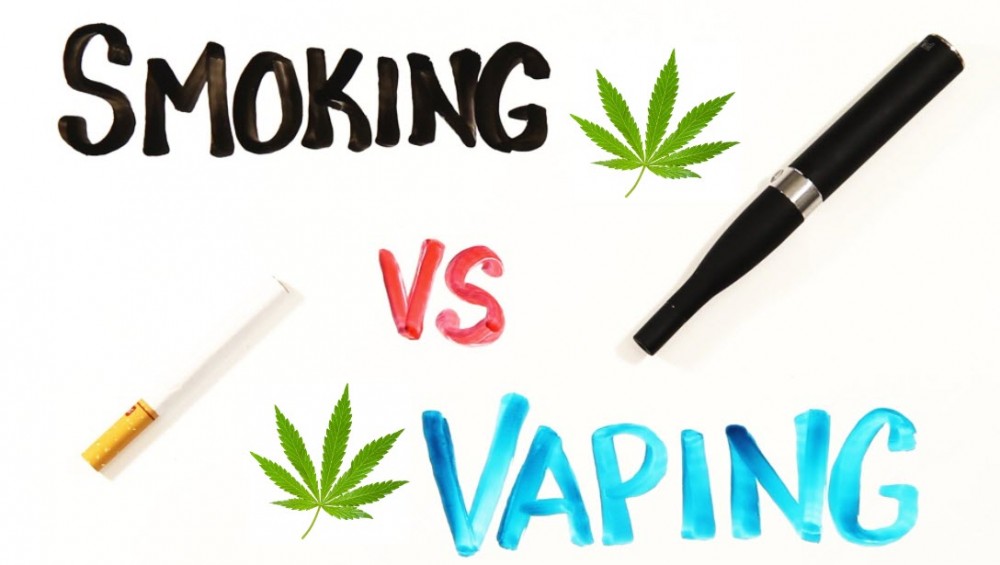Can Cannabis Give You Cancer? Carcinogens Found In Cannabis Oil
A new study published in ACS Omega called Toxicant Formation in Dabbing: The Terpene Story, revealed some very shocking and scary information about carcinogens found in cannabis oil.
The report discusses the impact of dabbing or vaporizing hash oil on health, which is alarming given that it’s one of the most popular means of consuming cannabis. The study, conducted by researchers from Portland State University, discovered benzene and other cancer-causing ingredients in vapor from butane hash oil, a type of cannabis extract. The findings place dabbing in the hot seat once again, the most controversial of all cannabis consumption methods because the procedure used to create dabs has been known to cause fires due to its explosive nature.

Dabbing involves placing a dab, or cannabis extract, on a heated surface followed by inhalation of the vapor produced. While that doesn’t seem too bad, dabbing has divided the cannabis community due to the intensity of the high it gives as well as the safety concerns involved in making it. Now the study has provided another (legitimate?) reason for users to think twice before dabbing. “Given the widespread legalization of marijuana in the US, it is imperative to study the full toxicology of its consumption to guide future policy,” says Robert Strongin, Ph.D., the study’s senior author and a professor of organic chemistry in Portland State University. “The results of these studies clearly indicate that dabbing, while considered a form of vaporization, may, in fact, deliver significant amounts of toxins.”
In order to conduct the study, Dr. Strongin and his team explored terpenes by vaporizing them. Terpenes are responsible for giving off the aroma of cannabis as well as other plants. “The practice of ‘dabbing’ with butane hash oil ahs emerged with great popularity in states that have legalized cannabis,” the authors state. “Despite their growing popularity, the degradation product profiles of these new products have not been extensively investigated.”
The authors add that the study emphasized the “chemistry of myrcene and other common terpenes found in cannabis extracts. Methacrolein, benzene, and several other products of concern to human health were formed under the conditions that simulated real-world dabbing. The terpene degradation products observed are consistent with those reports in the atmospheric chemistry temperature. “
The researches also found that most of the terpenes in vaporized hash oil were the same ones used in cigarette vapes, also known as e-cigarette liquids. Dr. Strongin and his team conducted experiments in the past where they also found similar toxic chemicals in e-cigarette vapor when the devices were used at extremely high temperatures. However, in the dabbing experiment, they found that it produced benzene, a well-known cancer-causing chemical, in many levels that are much higher than in ambient air. They also found that high-temperature dabbing produced high amounts of methacrolein, which is similar to acrolein, both of which are known carcinogens.
“The results of these studies clearly indicate that dabbing, although considered a form of vaporization, may, in fact, deliver significant amounts of toxic degradation products,” the authors said. “The difficulty users find in controlling the nail temperature put(s) users at risk of exposing themselves to not only methacrolein but also benzene. Additionally, the heavy focus on terpenes as additives seen as of late in the cannabis industry is of great concern due to the oxidative liability of these compounds when heated. This research also has significant implications for flavored e-cigarette products due to the extensive use of terpenes as flavorings.”
Other hazards
This isn’t the first time that vapes have gotten some bad rep. In 2015, Project CBD released a report discussing the hazards of heating as well as inhaling propylene glycol (PG), which is a thinning agent widely used in the manufacture of vape pen cartridges and other cannabis oil products.
Project CBD states that when PG is exposed to heat in electronic vaporizers, it decomposes into formaldehyde, another known carcinogen. In fact, according to the report, almost every hemp CBD vape oil brand they analyzed contained PG. What’s even scarier is that they also found polyethylene glycol (PEG), yet another toxin. While these chemicals are harmful, they’re even more dangerous when heated. Researchers at the Medical Marijuana Research Institute in Arizona also examined PG when it degrades, as well as PEG, vegetable glycerin, and medium-chain glycerides which is found in coconut oil. The compounds were heated to 230 degrees Celsius, which is likely the same temperature used in vaporizers. They found that PEG resulted in high amounts of formaldehyde and acetaldehyde. The researchers confirmed that in the given temperature, PG decomposes into the formaldehyde.
“Formaldehyde inhalation has been linked to increased incidence of myeloid leukemia and nasopharyngeal cancer,” the scientists said.

Vaporizing: What now?
Many consumers prefer to vaporize because it was touted as a safer or healthier way to consume cannabis as opposed to smoking. Now, we’re no longer sure; what we do know is that it’s become more critical than ever to study the quality of the product before we use them.
OTHER STORIES YOU MAY ENJOY...
THE BENEFITS OF VAPING, CLICK HERE.







